- Home
- Dick Francis
Comeback Page 8
Comeback Read online
Page 8
“We went through all this ad infinitum yesterday morning,” he said. “Checked every valve, checked the pump, checked the oxygen, which comes in from outside cylinders when we turn on this tap.” He showed me. “Sometimes the heart starts failing and there’s not a damn thing one can do about it. We’ve had our fair share of those recently.” He stopped his narrative abruptly, as if remembering I didn’t wholly belong there. “Anyway, I’m checking everything twice.”
He darted in and out, readying other things that he didn’t explain and I stood around feeling that I ought to be helping, but out of ignorance couldn’t.
There was the sound of a car door slamming outside. Scott—it had to be Scott, the anesthetist—lifted his head at the sound and rolled enough wall to one side to allow us access to the padded room. He crossed the spongy floor with his power-packed stride and unlocked the door to the corridor. With myself still at his heels (snapping off the shoe-covers) we went down there and emerged into the brisk air and found Ken in anorak and wellies letting down the rear ramp of a small horse-trailer that had been towed there by a Land-Rover.
“Scott, good,” Ken said, letting the ramp fall with a clang. “I had to drive the damn thing myself. They’ve two mares foaling at this moment at Vernonside and no staff to spare. They’re stressed beyond sense. This mare is dying on her feet and she’s carrying a foal worth God knows what by Rainbow Quest.”
He sped into the trailer to fetch his patient, who came lumbering backwards down the ramp looking sicker than I’d known was possible with animals. Heavy with foal, she was bloatedly fat. Her head hung low, her brown skin glistened with sweat, her eyes were dull and she was making groaning noises.
“She’s full of painkillers,” Ken said. He saw me standing there and in black distress said, “Her heart’s laboring. She’s swollen with gas and there’s feedback up from her stomach. That means her gut’s obstructed. It means she’ll die probably within an hour if I don’t operate on her, and quite likely if I do.”
“You’d be safer with a second opinion,” I said.
“Yes. I phoned Carey on my way back here, asking him to get someone, or come himself. He said to trust my own ability. And he said I’m the best horse surgeon in this area. I do know it, even if I don’t usually say it.”
“So you’ll go ahead,” I said.
“Got no choice, have I? Just look at her.”
He handed the mare’s leading rein to Scott, who said, “Belinda’s not here yet.”
“She’s not coming,” Ken said. “I couldn’t find her. I phoned the trainer who’s got our horses in his yard and he said he didn’t know where she was sleeping and he wasn’t going around at this hour looking for her.”
“But...” Scott said, and fell silent.
“Yes. But.” Ken looked directly at me. “What I want you to do is watch and make notes. A witness. Just write down what I tell you and what Scott tells you. Do you faint at the sight of blood?”
I thought of the broken bodies on the hillside.
“No,” I said.
4
In the padded room, while Scott held her by the head collar, Ken with sensitive fingers, found the mare’s jugular vein and pushed into it what looked like a long hypodermic needle covered with plastic and an end connector that remained outside on the skin.
“Catheter,” he said, removing the needle and leaving the plastic sleeve in the vein.
I nodded.
“Intravenous drip,” he enlarged, fastening to the catheter a tube from one of the bags of fluid that Scott was busily suspending from the ceiling. “You have to keep the body fluids up.”
He went briefly to the operating room, returning with a small syringeful of liquid, which he injected into the mare’s neck via the catheter.
“Half a cc of Domosedan,” he said, spelling it for me as I wrote on a pad on a clipboard. “It’s a sedative to make her manageably dozy. Mind you, don’t get within reach of her feet. Horses kick like lightning, even in this state. Go behind that half-wall, out of reach.”
I stood obediently behind a freestanding section of padded wall that allowed one to see the action while being shielded from trouble: rather like the shelter provided in bullrings for humans to escape the horns.
“What do you do with the syringe now?” I asked.
“Throw it away. It’s disposable.”
“Keep it,” I said.
Ken gave me a pale blue stare, considered things, and nodded.
“Right.”
He took the syringe into the operating room and put it in a dish on one of the tables round the walls. He wore what I did: his own shoes covered with disposable covers, green cotton trousers, short-sleeved green shirt, a lab coat over them, surgical mask dangling round his neck, a soft white cap like a shower cap over his hair.
Scott, in similar clothes, rubbed a hand down the mare’s nose, fondling her ears and making soothing noises. Slowly some of the jangle loosened in her beleaguered brain, peace perceptibly creeping in until she was quiet and semiconscious on her feet.
Ken, watching her closely, had come back carrying a larger syringe in another dish. “Antibiotic,” he said, injecting. He went away to pick up a third.
“This is ketamine hydrochloride,” he said, returning and spelling it again for me. “Sends her to sleep.”
I nodded. Scott shut the sliding door to the operating room: Ken temporarily disconnected the drip and with smooth skill injected the mare again through the catheter in her neck. Almost immediately the great body swung round in an uncoordinated arc, staggered, wavered and collapsed slowly sideways, one hind leg lashing out in a muscle spasm that spent itself harmlessly against the padding, the head flopping with a thump onto the spongy floor.
Dramatic, I thought; but routine, obviously, to Scott and Ken.
“Intubation,” Ken said to Scott.
Scott nodded and passed an impressively large tube into the mare’s mouth and down her throat.
“For oxygen and halothane,” Ken told me briefly.
Scott opened the sliding door wide, went into the operating room with the syringe in the dish and returned with the padded cuffs for the mare’s legs, and also bags to cover her feet.
Both men buckled these on, then pulled down the chains from the ceiling and linked them to the cuffs. Scott fetched a sort of canvas sling with handles for carrying the mare’s head, and Ken without waste of time pressed buttons on a panel in the theater wall to activate the winch.
The chains wound back and hoisted the half-ton horse effortlessly into the air. Scott supported her head in the sling while Ken reconnected the drip. Then Ken pressed another button and a high rolling trolley moved slowly along the ceiling rails, taking the dangling body, intravenous fluid and all, into the theater.
The rails themselves positioned the patient directly over the table. Ken pressed buttons. The chains lengthened, letting down their burden inch by inch until the mare was lying on her back with all four legs in the air, her distended belly a brown rounded hump. Scott laid her head down gently and then helped Ken hitch the legcuffs to the four posts at the corners of the table so that her legs were comfortably bent, not stiff and straight. The two men worked without speaking, moving smoothly through a maneuver often repeated.
“Ventilator on,” Ken said. “Gas on.”
Scott fixed the tube in the horse’s mouth to a tube from the ventilator, then pressed a switch and turned a tap, and the oxygen-halothane mixture began pumping with slow insistent rhythm into the mare’s lungs.
Ken asked me briefly, “Do you understand all that?”
“Yes,” I said.
“Good. Now I’m going to slide another catheter into her facial artery where it curves round the mandible. It will directly monitor her blood pressure. Normally Belinda would do this but today I’ll do it myself.”
I nodded and watched his deft fingers push a small tube into the mare’s jaw and connect it to a metering machine rolled into place by Scott. Both he and Sc
ott watched with clear anxiety the two lines that appeared on a monitoring screen, but it seemed that they were reassured, at least for the present.
“Final scrub,” Ken said at length. He looked at me. “You’d better come and watch.”
I followed him into the scrub room, where he lengthily scrubbed his hands clean and dried them on a sterile towel. Then at his request I helped him put on a fresh sterile gown, tying the tapes for him. Finally he pushed his hands into sterile latex gloves.
“If this mare dies,” Ken said, “I’m finished.”
“Stop thinking about it.”
He stood for a moment with all the strain showing in his eyes, then he blinked them a few times very positively and took a visibly deep breath.
“Come on, then.” He turned away and went towards the theater, asking me to open the swing door for him so as not to contaminate himself.
He went first to where Scott stood, which was in front of the blood pressure screen, watching it.
“She’s stabilized,” Scott said, his relief evident, “and I’ve shaved her skin.” There was indeed now a shaved strip all along the mountainous belly.
Ken said to me, “I need Scott to assist me. Will you stand by this screen? Watch it all the time. A horse’s blood pressure is about the same as humans’, ideally 120 over 80; but like humans, it drops under anesthesia. If it drops below 70 millimeters of mercury, we’re in trouble and an alarm will go off. We should be safe between 80 and 90, where we are now. Watch that line there. And that counter, that’s the heart rate. If there’s any change in either of them, tell me immediately.”
“Right.”
“Write down the time, the heart rate and the blood pressure.”
I nodded, and wrote.
He went round to the other side of the table where Scott brought forward instruments on rolling carts and created what Ken called a sterile area in the room. He and Scott between them took disposable green cloths out of sterile packaging and laid them all over the horse’s abdomen, leaving visible only a narrow shaved section on top.
“All set?” Ken asked Scott, and Scott nodded.
It was the last moment that Ken could have drawn back, but the commitment in his mind had been made long before.
“Incision,” he said, dictating to me while he picked up a scalpel and with precision suited the deed to the word. “Ten inches, beside the umbilicus.”
I wrote fast what he’d said and switched my gaze back to what he was doing. Scott, meanwhile, went off to scrub.
“Watch the blood pressure,” Ken said fiercely, not even raising his eyes. “Don’t watch me, watch the monitor between writing.”
I watched the monitor, which remained steady. I still couldn’t help taking fascinated second-long glances at a process I’d expected to be horrifying, but wasn’t in the least. For one thing, there was little smell, when I’d somehow been prepared for stench, nor, with retractors, clamps, forceps and swabs, even a great deal of bleeding.
“Cutting along the linea alba,” Ken said, continuing his running commentary. “That’s the central fibrous ridge between muscle groups. If you cut through there into the abdominal cavity you get little bleeding.” He looked at Scott, who had returned, and without being asked Scott held out a long rubber sleeve-glove, which he pulled on over Ken’s right hand and arm up to the armpit. “Watertight,” Ken explained to me briefly, “and of course sterile, for going into the abdomen.”
What I hadn’t begun to envisage were the extraordinary contents of an equine tum. From out of the quite small incision popped a large ridged bit of intestine and in its wake Ken slowly began to pull a loop of vast tube ten or more inches in diameter, seemingly endless, pink, bulbous and glistening. My eyes, I suppose, were equally huge with astonishment.
“Watch the screen,” Ken said. “This is the colon, now distended by gas. The equine colon’s not held in place by connecting tissue like in humans, it just zigzags free. Half of all cases of twisted gut are colon trouble.” He pulled out at least another yard of the enormous tube and gave it to Scott to support in a green cloth while he felt around in the cavity it had come from.
“The mare’s less than a month from foaling,” he said. “It’s a good-sized foal.” He was silent for a moment or two, then said unemotionally, “If she collapses and I can’t save her, I’ll deliver the foal here and now by cesarean section. It might have a chance. It’s got a good strong heartbeat”
Scott glanced at him quickly and away, knowing, I thought, a good deal more than I did about the risks of such a procedure.
From time to time, as the drip bag emptied, Scott replaced it with a full one from the two-way cupboard, asking me to fetch it for him and to throw the empty one away.
“Screen?” Ken asked me after each change.
“Same,” I said.
He nodded, intent, slowly feeling his way round the internal organs, his eyes in his fingertips.
“Ah,” he said finally. “Here we are. God, what a twist” He brought some part I couldn’t see up into his own vision but still just inside the mare and made an instantaneous decision to cut out the tangled obstruction altogether.
“Eyes on the screen all the time,” he instructed me sharply.
I obeyed him, seeing his actions only in peripheral vision.
Supplied with instruments by Scott, he worked steadily, attaching clamps, clipping, removing tissue, swabbing, stitching, making occasional noises in his throat but otherwise not talking. Time passed. Eventually he took two clamps off and watched the results unwaveringly.
“Monitor?”
“Steady.”
He murmured to himself and finally looked up. “All right. The obstruction’s excised and the gut repaired. No leaks.” He seemed to be fighting down hope he couldn’t help. “Ready to close up.”
I glanced at the great length of huge intestine looped over Scott’s arm and couldn’t see how on earth they were going to stuff it all back into the body cavity.
As if reading my mind Ken said, “We’ll empty the colon.” Scott nodded. Ken asked me to fetch an open trash can that stood against one wall and to position it near him beside the table. Next he wanted me to slot a tray into the table, rather like tray tables in airplanes. A colon tray, he said.
He nodded his thanks. “You’re a nonsterile area,” he said almost cheerfully. “Go back to the screen, will you?”
He straightened the colon until part of it was on the tray and over the trash can, then swiftly made a slit, and he and Scott began systematically to squeeze out all of the contents.
This time it did smell, but only like a stable yard, quite fresh and normal. For some reason I found myself wanting to laugh: the process was so incredibly prosaic and the can so incredibly full.
“Monitor,” Ken said severely.
“Steady.”
Scott washed the now empty, flabby and lighter tubing with fluid, and Ken, in a fresh gown and gloves, stitched up the slit he’d made in it; then, carefully folding it into zigzags, he returned the large gut to its rightful position inside. He did a quick, half-audible checklist on the abdomen, almost like a pilot coming in to land and, still with deftness and care, fastened the incision together in three layers, first the linea alba with strong separately knotted stitches, then the subcutaneous tissue with a long single thread, finally closing the skin with a row of small steel staples, three to an inch. Even the stapler came separately packed, sterile and throwaway, made mostly of white plastic, handy and light.
After the briefest of pauses, when he’d finished, Ken pulled his mask down and gave me a look of shaky triumph.
“She’s made it so far,” he said. “Scott, gas off.”
Scott, who had put a lid on his odorous trash can and rolled it away, had also been round to the ventilator to turn off the halothane.
“Blood pressure?” Ken asked.
“No change,” I said.
“Ventilator off,” Scott said. “Disconnect the catheter?”
Ke
n nodded. “She’s got a strong heart. Write down the time,” he said to me, and I looked at my watch and added the time to my notes.
“Ninety-one minutes from incision to finish,” I said.
Ken smiled with the professional satisfaction of star work well done, the doubts and shakes in abeyance. He light-heartedly peeled off the green sterile cloths from the mare’s round body and threw them into a trash can.
He and Scott unclipped the mare’s legs from the bed-posts. Then the hoist, with Scott supporting her head, lifted her up off the table. In reverse order she rolled along the rails and through the sliding door into the padded room, where Ken brought over an extra panel of padding and placed it on the floor. The hoist lowered the mare onto that until she lay on her side comfortably, her legs relaxing into their normal position.
Scott removed the padded cuffs from her legs and put a rope halter on her head, leading the rope through a ring on top of the half-wall so that someone standing behind the wall could partly control her movements and stop her staggering about too much.
“She’ll take twenty minutes or so to wake up slowly,” Ken said. “Maybe in half an hour she’ll be on her feet, but she’ll be woozy for a good while. We’ll leave her here for an hour after she’s standing, then put her in the stable.”
“And is that it?” I asked, vaguely surprised.
“Well, no. We’ll leave in the stomach tube to make sure nothing’s coming back up the wrong way, like it was before—reflux, it’s called—and because we can’t give her anything to eat or drink for at least twelve hours, we’ll continue with the intravenous drip. Also we’ll continue with antibiotics and a painkiller-sedative and we’ll monitor her heart rate, and tonight if everything’s OK we’ll take out the stomach tube and try her with a handful of hay.”
Hay, after all that, seemed like bathos.
“How long will you keep her here?” I asked.
“Probably a week. It knocks them over a bit, you know, a major op like that.”
He spoke with earnest dedication, a doctor who cared. I followed him back into the operating room and through to the vestibule, where he stripped off all the disposable garments and threw them into yet another bin. Scott and I did the same, Ken walking back immediately to take a continuing look at his patient.

 Bolt
Bolt Proof
Proof Straight
Straight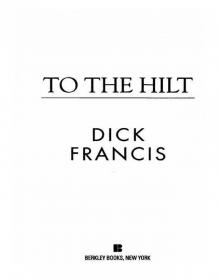 To the Hilt
To the Hilt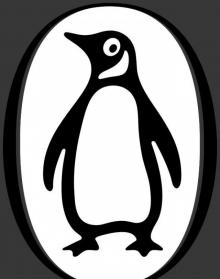 High Stakes
High Stakes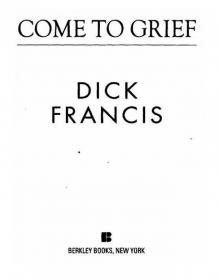 Come to Grief
Come to Grief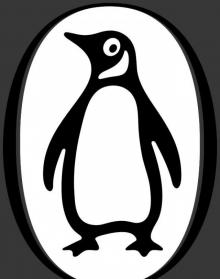 Odds Against
Odds Against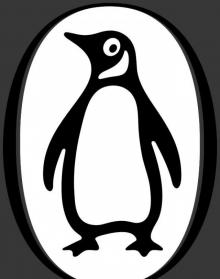 Knock Down
Knock Down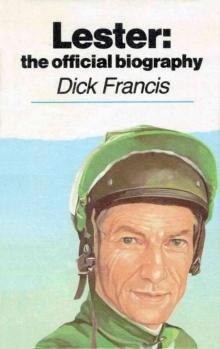 Lester: The Official Biography
Lester: The Official Biography Blood Sport
Blood Sport Trial Run
Trial Run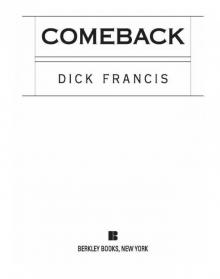 Comeback
Comeback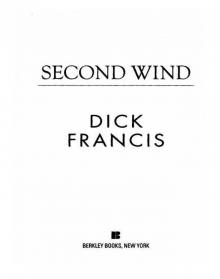 Second Wind
Second Wind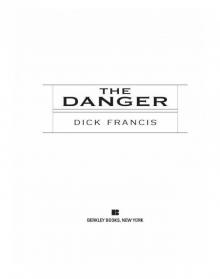 The Danger
The Danger Under Orders sh-4
Under Orders sh-4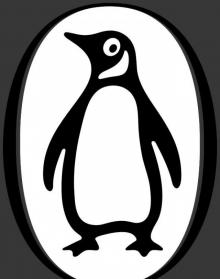 Break In
Break In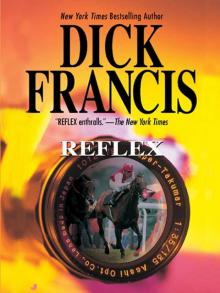 Reflex
Reflex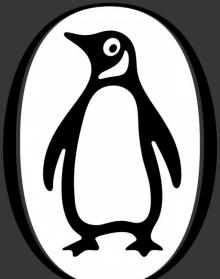 Dead Heat
Dead Heat Dick Francis's Damage
Dick Francis's Damage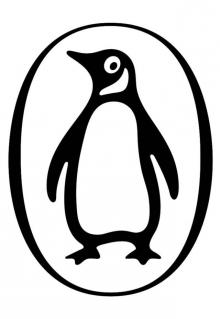 The Edge
The Edge Wild Horses
Wild Horses Longshot
Longshot Slay Ride
Slay Ride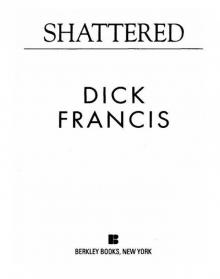 Shattered
Shattered Banker
Banker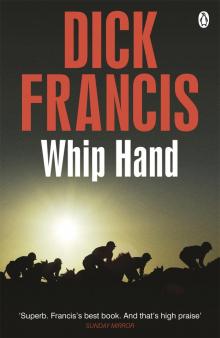 Whip Hand
Whip Hand Even Money
Even Money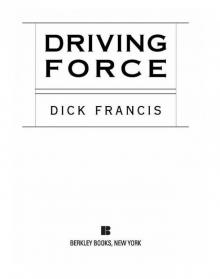 Driving Force
Driving Force Decider
Decider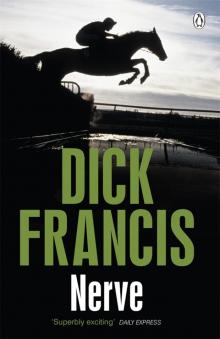 Nerve
Nerve Hot Money
Hot Money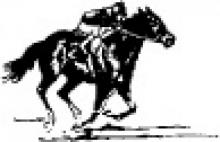 Field of Thirteen
Field of Thirteen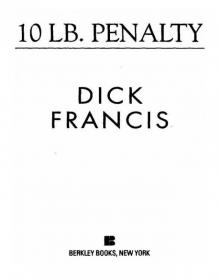 10 lb Penalty
10 lb Penalty Dead Cert
Dead Cert Flying Finish
Flying Finish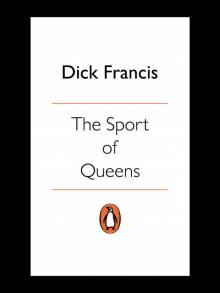 The Sport of Queens
The Sport of Queens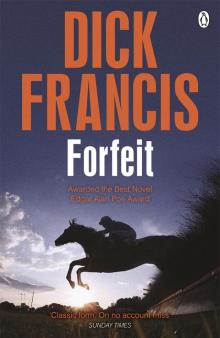 Forfeit
Forfeit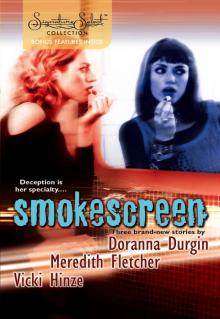 Smokescreen
Smokescreen Twice Shy
Twice Shy Silks
Silks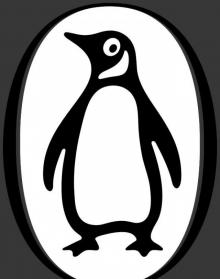 Enquiry
Enquiry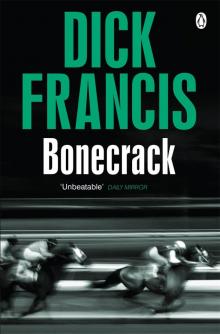 Bonecrack
Bonecrack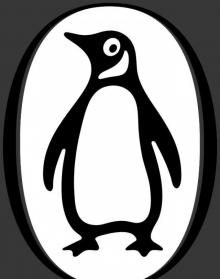 For Kicks
For Kicks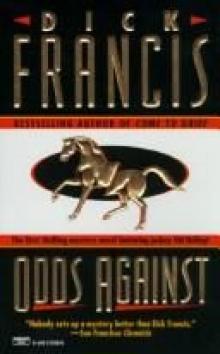 Odds against sh-1
Odds against sh-1 Rat Race
Rat Race Crossfire
Crossfire